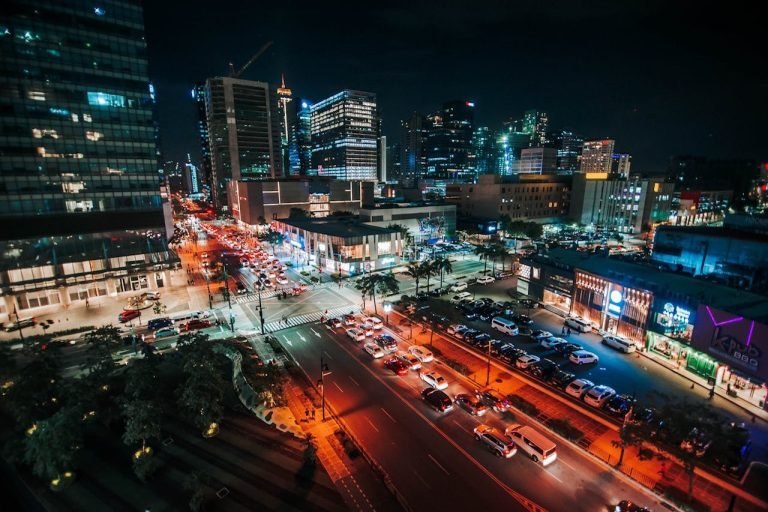Street Food Adventures in Manila – Did you know that Manila was named one of Asia’s top street food destinations by Forbes in 2023? As someone who’s spent countless evenings exploring the vibrant streets of this bustling city, I can tell you that Manila’s street food scene is more than just sustenance – it’s a window into the soul of Filipino culture! From steaming bowls of balut to crispy banana cue, let me take you on a mouthwatering journey through the best street food spots in Manila.
I’ll never forget my first night wandering through the neon-lit streets of Binondo, where the sizzle of fishballs hitting hot oil mingles with the steam rising from fresh siomai carts. Trust me, once you dive into Manila’s street food scene, you’ll discover a world of flavors that’ll change how you think about outdoor dining forever!
Find Awesome stays
Wondering where to do stay during your Trip? Explore a range of hotels luxury, mid-range to budget friendly!
Things to do
What to do during your holiday? A range of activities from solo to family friendly to group activities!
Essential Manila Street Food: Must-Try Dishes
Let me tell you about the time I finally worked up the courage to try balut! I was with my Filipino friend Maria, who couldn’t stop laughing at my nervous expression. But you know what? It wasn’t nearly as intimidating as I’d imagined! Here are the absolute must-try dishes you’ll find throughout Manila:
Balut is definitely the most famous (or infamous!) Filipino street food. You’ll find the freshest ones at Pateros Market, particularly from Aling Rosa’s stall, who’s been selling balut for over 30 years. The best time to go is between 4-6 PM when the eggs are perfectly warm.
Fishballs, squidballs, and kikiam are the holy trinity of Filipino street food! My favorite vendor is Mang Tony, who sets up his cart daily at the corner of Quintin Paredes and Juan Luna Streets in Binondo. His secret? He makes his sweet and spicy sauce fresh every morning. A portion will set you back just 20-30 pesos.
For isaw (grilled chicken intestines), you absolutely must visit the legendary “Isaw Row” near the University of the Philippines Diliman. I swear by Mang Larry’s Isawan (near the UP Academic Oval) – his marinade is perfectly balanced between sweet and savory. Pro tip: get there before 5 PM to avoid the student rush!

Best Street Food Districts in Manila
Binondo Food Paradise
After years of exploring Manila’s food scene, I can confidently say that Binondo is the crown jewel of street food districts. Here’s where you absolutely need to go:
Dong Bei Dumplings (411 Yuchengco St, Binondo) serves the most incredible fresh dumplings I’ve ever tasted outside of China. Their kuchay dumplings are a must-try – they make them right in front of you! Be prepared to wait during peak hours (11 AM-1 PM), but trust me, it’s worth it.
New Po Heng Lumpia House (531 Quintin Paredes St) makes fresh lumpia that’ll change your life. I watched Ms. Amy wrap these beauties lightning-fast for 15 years, and now her daughter continues the tradition. The secret is in their garlic sauce – don’t skip it!
Quick Snack Restaurant (637-639 Carvajal St) might look unassuming, but their kuchay dumplings are legendary. I always order extra to take home. Pro tip: they’re busiest during Chinese New Year, so plan accordingly.

Divisoria Market Area
Divisoria is where budget-conscious food lovers should head first. The area around 168 Shopping Mall Food Court offers some of the city’s most affordable yet delicious street food options. Here’s my tried-and-tested route:
Start at the 168 Shopping Mall Food Court for their famous siomai and noodles. The vendor at stall #23 makes everything fresh daily. Their beef mami soup has gotten me through countless rainy days!
Next, head to Tutuban Center Food Street (CM Recto Ave). The takoyaki stand near the entrance makes them extra crispy – just how I like them. They’re generous with the bonito flakes too!
Lucky Chinatown’s street food stalls (Reina Regente St) come alive after 4 PM. Look for Aling Marie’s taho cart – she adds a special ginger syrup that makes her version unique.

Popular Street Food Markets & Night Markets
The modern food market scene in Manila has exploded in recent years. Mercato Centrale @ BGC (25th Street cor. 7th Avenue, BGC) changed my whole perspective on street food. They’ve managed to elevate street classics while keeping prices reasonable. Their sisig tacos are a perfect example of Filipino fusion done right!
QC Night Market on Mindanao Avenue is where I go when I’m craving that authentic street food atmosphere with slightly better seating options. The isaw here is consistently good, and they have these amazing cheese-stuffed squidballs that I haven’t found anywhere else.
SM Mall of Asia’s Street Food Night Market (Seaside Blvd, Pasay) offers the best of both worlds – traditional street food with a sea breeze! The location right by Manila Bay means you can enjoy your kwek-kwek while watching the famous Manila sunset.

Street Food Safety & Tips
Look, I’ve eaten my way through Manila’s streets for years, and I’ve learned a few crucial lessons about staying safe while enjoying street food. Here’s what you need to know:
Choose vendors with high turnover – it means their food is fresh and popular. I always look for stalls with a line of locals. Watch how they handle money versus food – the best vendors have separate people for handling cash and preparing food.
Most street food areas come alive from 4 PM onwards, but each spot has its prime time:
- Binondo: 11 AM-2 PM for lunch crowds
- Divisoria: Early morning (6-8 AM) for the freshest selections
- Night markets: 6 PM onwards
- University areas: 3-7 PM when students get out of class
Price-wise, here’s what you should expect to pay (as of 2024):
- Fishballs/Squidballs: 20-30 pesos per portion
- Isaw: 15-20 pesos per stick
- Siomai: 25-30 pesos for 4 pieces
- Taho: 20-25 pesos per small cup
- Balut: 20-25 pesos each
Hidden Gems & Local Favorites
Let me share some off-the-beaten-path spots that most food blogs won’t tell you about. There’s this amazing carinderia near Quiapo Church (sorry, I promised the owner I wouldn’t share the exact location!) that serves the best palabok I’ve ever tasted. Just look for the pink storefront with the line of office workers during lunch.
For late-night cravings, head to Remedios Circle in Malate. Around midnight, a lady sets up her lugaw cart with the most incredible array of toppings I’ve ever seen. She’s been there for 25 years and knows every regular by name.
Conclusion
Manila’s street food scene is a living, breathing testament to the city’s rich culinary heritage. From the sizzling streets of Binondo to the modern night markets of BGC, there’s something here for every palate and budget. Remember to bring small bills, practice basic food safety, and most importantly – don’t be afraid to try something new!
Have you explored any of these street food spots in Manila? I’d love to hear about your favorite finds and hidden gems in the comments below. And if you’re planning your first street food adventure in Manila, feel free to ask any questions – I’m always happy to help fellow food explorers!
Frequently Asked Questions About Manila Street Food
Is it safe to eat street food in Manila?
Yes, it can be safe to eat street food in Manila if you follow some basic precautions. I always look for vendors with high turnover and lots of local customers. Choose stalls that cook food fresh in front of you, maintain clean workstations, and have separate people handling money and food. I recommend starting with fully cooked items like grilled foods and avoiding raw dishes until your stomach adjusts to the local cuisine.
What are the best times to try street food in Manila?
The optimal times depend on the area. Binondo’s street food scene is best during lunch (11 AM-2 PM) on weekdays. Night markets typically operate from 6 PM-12 AM. University areas are busiest from 3-7 PM when students finish classes. To avoid crowds, I suggest visiting between 2-4 PM when vendors are setting up for the evening rush. Remember that many vendors take Monday off, so plan accordingly!
How much money should I budget for a street food adventure in Manila?
Based on 2024 prices, you can have a satisfying street food experience for 300-500 pesos (approximately $5-9 USD) per person. This would typically cover 4-5 different items. For example:
- 2 portions of fishballs/squidballs (60 pesos)
- 2 sticks of isaw (40 pesos)
- 1 portion of siomai (30 pesos)
- 1 fresh lumpia (80 pesos)
- 1 drink (40 pesos) Remember to bring small bills as vendors often have limited change.
What’s the best way to get around Manila’s street food districts?
For Binondo and Divisoria, walking is your best option as streets are narrow and often crowded. For traveling between different food districts, I recommend using Grab cars or taxis, especially during evening hours. The LRT/MRT (train system) is also convenient for reaching areas like Cubao or Quezon City’s food markets. Avoid bringing large bags or backpacks as markets can get crowded.
What should I do if I have dietary restrictions or food allergies?
If you have dietary restrictions, learn these basic Filipino phrases:
- “Hindi ako kumakain ng…” (I don’t eat…)
- “May allergy ako sa…” (I’m allergic to…) Remember that many Filipino dishes contain shrimp paste (bagoong) and fish sauce (patis). For vegetarians, I recommend visiting Buddhist-friendly stalls in Binondo, particularly around Lucky Chinatown Mall, where you can find meat-free options. Always ask about ingredients if you’re unsure – most vendors are happy to help!


